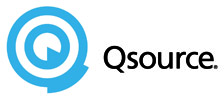Clean Hands Count for National Hand Washing Awareness Week
Practicing hand hygiene is a simple yet effective way to prevent infections. Cleaning your hands can prevent the spread of germs, including those that are resistant to antibiotics and are becoming difficult, if not impossible, to treat. On average, healthcare providers clean their hands less than half of the times they should. One of the most common modes of transmission of pathogens is via hands, and hand hygiene remains the most important infection prevention measure.
As the winter season approaches, patient visits increase. December 2-8, 2018 is National Hand Washing Awareness week and Qsource has a call-to-action for each healthcare provider to raise awareness of good hand hygiene. Provide staff and patients with key messages to encourage them to wash their hands the right way and at appropriate times.
Call-to-Action
Share these steps to wash your hands the right way. Post these steps in your facility.

Share the Centers for Disease Control and Prevention (CDC) hand washing video with staff.
View the CDC_Hand_Washing_Video.
Share what you do if you don’t have soap and clean, running water.
Washing hands with soap and water is the best way to get rid of germs in most situations. If soap and water are not available, use an alcohol-based hand sanitizer that contains at least 60% alcohol. You can tell if the sanitizer contains at least 60% alcohol by looking at the product label. Alcohol-based hand sanitizers can quickly reduce the number of germs on hands in some situations, but sanitizers do NOT get rid of all types of germs.
Additional Resources:
- Hand Hygiene Assessment for Nursing Homes
- CDC’s Hand Hygiene Webpage
- APIC’s Hand Hygiene Webpage
- Hand_Hygiene_Posters
To learn more about how Qsource is working to reduce infections and improve how antibiotics are used, visit http://atomalliance.org/initiatives/coordination-of-care/antibiotic-stewardship/.
 Skip to main content
Skip to main content


